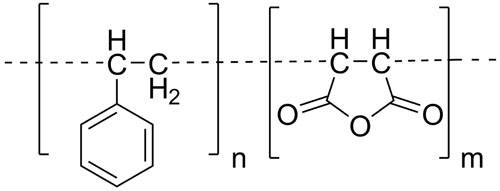Register: Membrane Protein Paris 2024 on Oct. 14
Membrane Protein Paris 2024 is being co-organized with APPICOM and ISC-PIF, and focuses on the latest developments related to biological membrane structure, function and dynamics. Targets including transporters, GPCRs, ion channels and respiratory complexes will be presented, as will technologies for discovery of drug molecules and antibodies specific for native membrane proteins. Methods for purifying membrane assemblies using amphipols, SMA-derivatives and biotinylated polymers will be presented.
Sunday October 13, 2024: Videos
Session 1 Chair: Johanna Syrjänen, Group Leader, University of Helsinki
 13:05 Claire Naylor, Quantifoil: Delivering consistent and efficient imaging for single particle analysis (SPA) with HexAuFoil® sample supports. Previously at Molecular Dimensions and
13:05 Claire Naylor, Quantifoil: Delivering consistent and efficient imaging for single particle analysis (SPA) with HexAuFoil® sample supports. Previously at Molecular Dimensions and
 13:15 Jim Reid, Senior Principal Scientist - Protein Biology, Domainex: Fragment Screening of Adenosine A2a Receptor using Polymer-Encapsulated Nanodiscs
13:15 Jim Reid, Senior Principal Scientist - Protein Biology, Domainex: Fragment Screening of Adenosine A2a Receptor using Polymer-Encapsulated Nanodiscs
Session 2 Chair: Clarisse Fourel, PhD Student, IBPC, University of Paris-Saclay
![]() 13:30 Francisco Barrera, Associate Professor, UTK: Cholesterol Controls the Assembly and Activity of the EphA2 Receptor
13:30 Francisco Barrera, Associate Professor, UTK: Cholesterol Controls the Assembly and Activity of the EphA2 Receptor
 13:40 Frank Bernhard, PI, Goethe University Frankfurt: Cryo-EM structures of cell-free synthesized GPCR/G protein complexes in nanodiscs
13:40 Frank Bernhard, PI, Goethe University Frankfurt: Cryo-EM structures of cell-free synthesized GPCR/G protein complexes in nanodiscs
 13:50 Evelyn Okorafor, Miami University, Oxford: Investigating The Charge Effect of SMA Derivatives On The Membrane Bilayer Using Solid-State NMR
13:50 Evelyn Okorafor, Miami University, Oxford: Investigating The Charge Effect of SMA Derivatives On The Membrane Bilayer Using Solid-State NMR
Monday October 14, 2024 (in person)
9:00 am Opening Comments by Vincent Chaptal, CNRS; APPICOM Director
Session 3 Chair: Guillaume Lenoir, LPSM Group Leader, University Paris-Sud
 09:10 Bjorn Pedersen, Professor, Dept. of Molecular Biology & Genetics, Aarhus U, Denmark: Transport of auxin herbicides by PIN-formed transporters
09:10 Bjorn Pedersen, Professor, Dept. of Molecular Biology & Genetics, Aarhus U, Denmark: Transport of auxin herbicides by PIN-formed transporters
 09:40 Martin Picard, CNRS Research Director, Biochimie des Protéines Membranaires, Institut de Biologie Physico-Chimique, Paris: In Vitro Investigation of Antibiotic Transport via Tripartite Efflux Pumps in Gram-Negative Bacteria
09:40 Martin Picard, CNRS Research Director, Biochimie des Protéines Membranaires, Institut de Biologie Physico-Chimique, Paris: In Vitro Investigation of Antibiotic Transport via Tripartite Efflux Pumps in Gram-Negative Bacteria
 10:00 Cathy Etchebest, Professor, DSIMB, INSERM, Paris-Diderot: New insights in the dynamics and functional mechanisms of Potassium Channels brought by molecular dynamics simulations
10:00 Cathy Etchebest, Professor, DSIMB, INSERM, Paris-Diderot: New insights in the dynamics and functional mechanisms of Potassium Channels brought by molecular dynamics simulations
10:20 Coffee Break
Session 4 Chair: Guillaume Lenoir, LPSM Group Leader, University Paris-Sud
 10:50 Chiara Rapisarda, Group Leader in cryo-EM at Sanofi: Developing New Capabilities to Accelerate Drug Discovery
10:50 Chiara Rapisarda, Group Leader in cryo-EM at Sanofi: Developing New Capabilities to Accelerate Drug Discovery
 11:10 Philipp Hanisch, Head of Laboratory, Cube Biotech: Next Generation Polymers for the Characterization of Membrane Proteins in Near-Native Conditions
11:10 Philipp Hanisch, Head of Laboratory, Cube Biotech: Next Generation Polymers for the Characterization of Membrane Proteins in Near-Native Conditions
 11:30 Donghui Ma, Founder & CEO, DIMA Biotech: The Application of Synthetic Nanodisc Technology in Therapeutic Antibody Discovery
11:30 Donghui Ma, Founder & CEO, DIMA Biotech: The Application of Synthetic Nanodisc Technology in Therapeutic Antibody Discovery
11:50 Industry Panel Discussion
12:00 Lunch
Session 5 Chair: Isabelle Mus-Veteau, CNRS Research Director, IMPC
 13:00 Manuela Zoonens, CNRS Research Director, Institut de Biologie Physico-Chimique, Université Paris: Fine-tuning amphipathic polymers for membrane protein purification: Enhancing solubilization while maintaining native lipid-protein interactions
13:00 Manuela Zoonens, CNRS Research Director, Institut de Biologie Physico-Chimique, Université Paris: Fine-tuning amphipathic polymers for membrane protein purification: Enhancing solubilization while maintaining native lipid-protein interactions
 13:15 Rebecca Murray, PhD Student, Coventry U and Stellenbosch U: Development of a Novel BRET-Based Assay Assessing the Function of GPCRs Solubilised with SMA and SMA-like Polymers
13:15 Rebecca Murray, PhD Student, Coventry U and Stellenbosch U: Development of a Novel BRET-Based Assay Assessing the Function of GPCRs Solubilised with SMA and SMA-like Polymers
 13:30 Ciara Frances Pugh, PhD Student, U Copenhagen: A novel copolymer for structural determination of human membrane proteins in native nanodiscs
13:30 Ciara Frances Pugh, PhD Student, U Copenhagen: A novel copolymer for structural determination of human membrane proteins in native nanodiscs
 13:45 Lea Hoffmann, Research Assistant, Structural Biology, University of Osnabrueck: The ABC transporter MsbA in a Dozen Environments
13:45 Lea Hoffmann, Research Assistant, Structural Biology, University of Osnabrueck: The ABC transporter MsbA in a Dozen Environments
14:00 Coffee Break
Session 6 Chair: Vincent Chaptal, CNRS-Lyon, IBCP; APPICOM Director
 14:30 Amedee des Georges, Associate Professor, Molecular Pathobiology, NYU: deciphering the gating mechanism of RyR1 using temperature-resolved cryo-EM
14:30 Amedee des Georges, Associate Professor, Molecular Pathobiology, NYU: deciphering the gating mechanism of RyR1 using temperature-resolved cryo-EM
 14:50 Claire de March, Assistant Professor, CNRS, Institute of Chemistry of the Natural Substances, U Paris Saclay: Structural Elucidation of Human Odorant Receptors
14:50 Claire de March, Assistant Professor, CNRS, Institute of Chemistry of the Natural Substances, U Paris Saclay: Structural Elucidation of Human Odorant Receptors
 15:10 Daniel Capelluto, Associate Professor, Virginia Tech: Mechanisms of regulation of endosomal cargo transporters
15:10 Daniel Capelluto, Associate Professor, Virginia Tech: Mechanisms of regulation of endosomal cargo transporters
 15:30 Leonid Sazanov, Professor, Institute of Science and Technology Austria: Structures and coupling mechanism of respiratory complex I, a huge molecular machine
15:30 Leonid Sazanov, Professor, Institute of Science and Technology Austria: Structures and coupling mechanism of respiratory complex I, a huge molecular machine
15:50 Open Discussion
16:00 Networking Reception
17:00 Close of meeting
Location
The Membrane Protein Paris 2024 conference is being held at the architecturally acclaimed TOTEM building at ISC-PIF, 11 Place Nationale, 75013 Paris.
SOLEIL Synchrotron Tour & Biological Imaging Talks
There is a free PhysChemCell2024 meeting entitled From Molecules to Organisms: Advancing Labelling, Imaging, and Analysis of Biological Samples at the Henri Moisan Site in southwest Paris on October 15 and a SOLEIL synchrotron tour on October 16 (you must register for these separately).
Co-organizers
- David Strobel, Institut de Biologie, Ecole Normale Supérieure de Paris
- Ewen Lescop, CNRS Research Director, ICSN, Université Paris-Saclay
- Guillaume Lenoir, LPSM Group Leader, University Paris-Sud
- Isabelle Mus-Veteau, CNRS Research Director, IMPC, Sophia Antipolis, France
- Martin Picard, CNRS Research Director, BPM lab at IBPC, Paris
- Michael Overduin, Director, SMALP Network
- Vincent Chaptal, Molecular Microbiology & Structural Biochemistry, CNRS; APPICOM Director
Background on SMALP
The SMALP system is being developed by the international research community as an alternative to conventional detergents, which tend to dissociate, destabilize and deactivate native membrane proteins.

A variety of amphipathic polymers like styrene maleic anhydride have been found to directly and spontaneously solubilize proteins and bound lipids from membranes when activated. This provides opportunities for understanding and exploiting the structure and function of native membrane protein complexes.
As SMALP technology is relatively new, the participation of the wider community and sharing of new ideas and practices amongst researchers is the best way to ensure continued rapid development of the field.
Join our network and come to our meetings to discover how SMALP materials and methods could be used in your research.
Join our community.
The SMALP network offers polymers, methods and meetings to support the growing community of scientists and companies interested in the preparation of membrane nanodiscs formed by polymers including styrene maleic acid for biological research and drug discovery applications.
Register for a day of insightful talks from experts in the structural biology and functions of membrane proteins and nanodisc development, discussions with academic and industry leaders, and enjoy breakfast, lunch and coffee breaks on us.
These events are offered to bring together academic and industry experts, postdocs and students who are interested in membrane protein structural biology, lipidomics, proteomics, target discovery and biophysical analysis of bilayers and amphipathic polymers.
We welcome researchers from across academia and industry to join us in lively discussions and debate about the latest advances in native nanodiscs, membrane proteins, polymer chemistry, lipid biophysics, structural biology, and applications including drug discovery and delivery.

